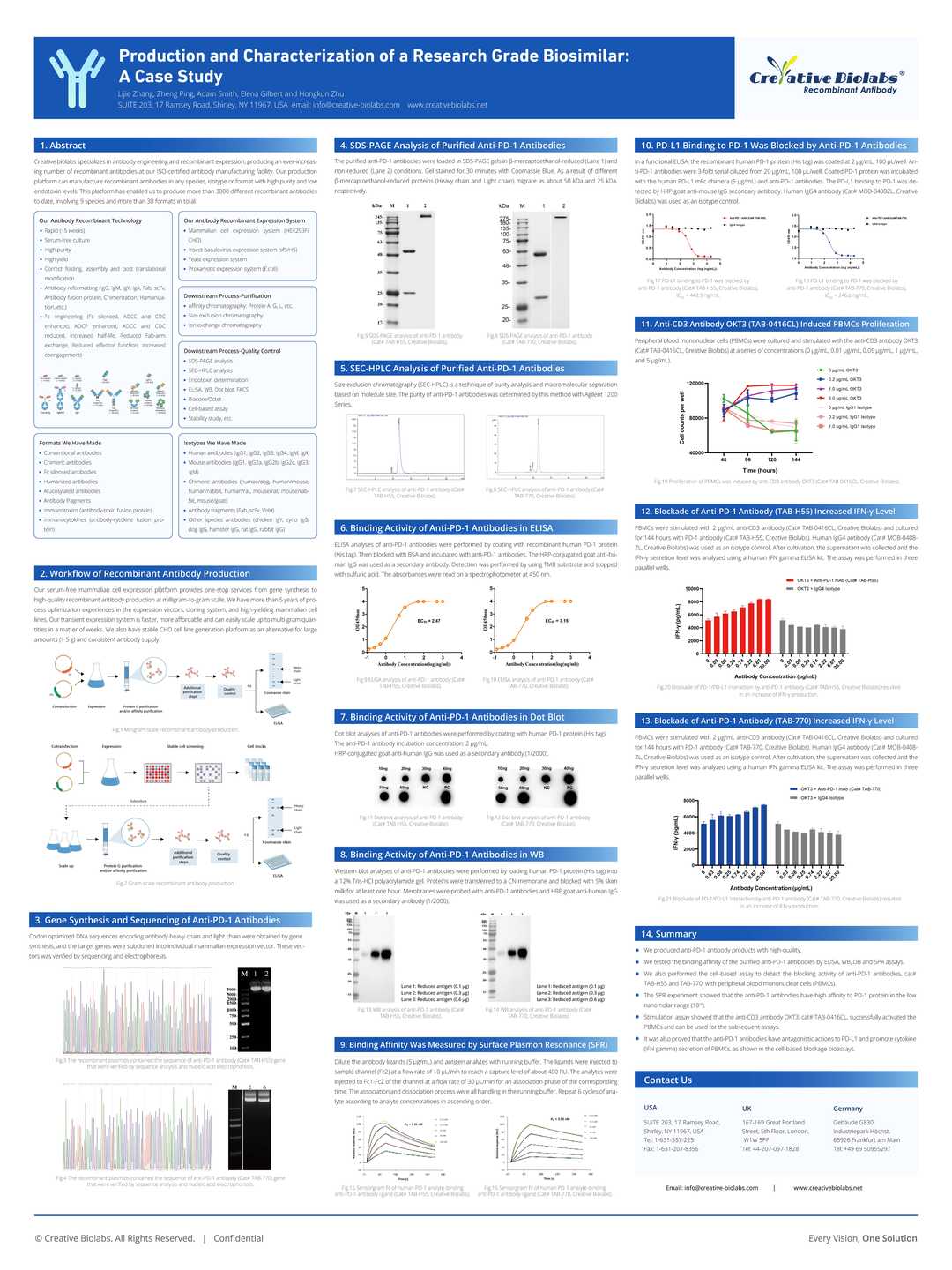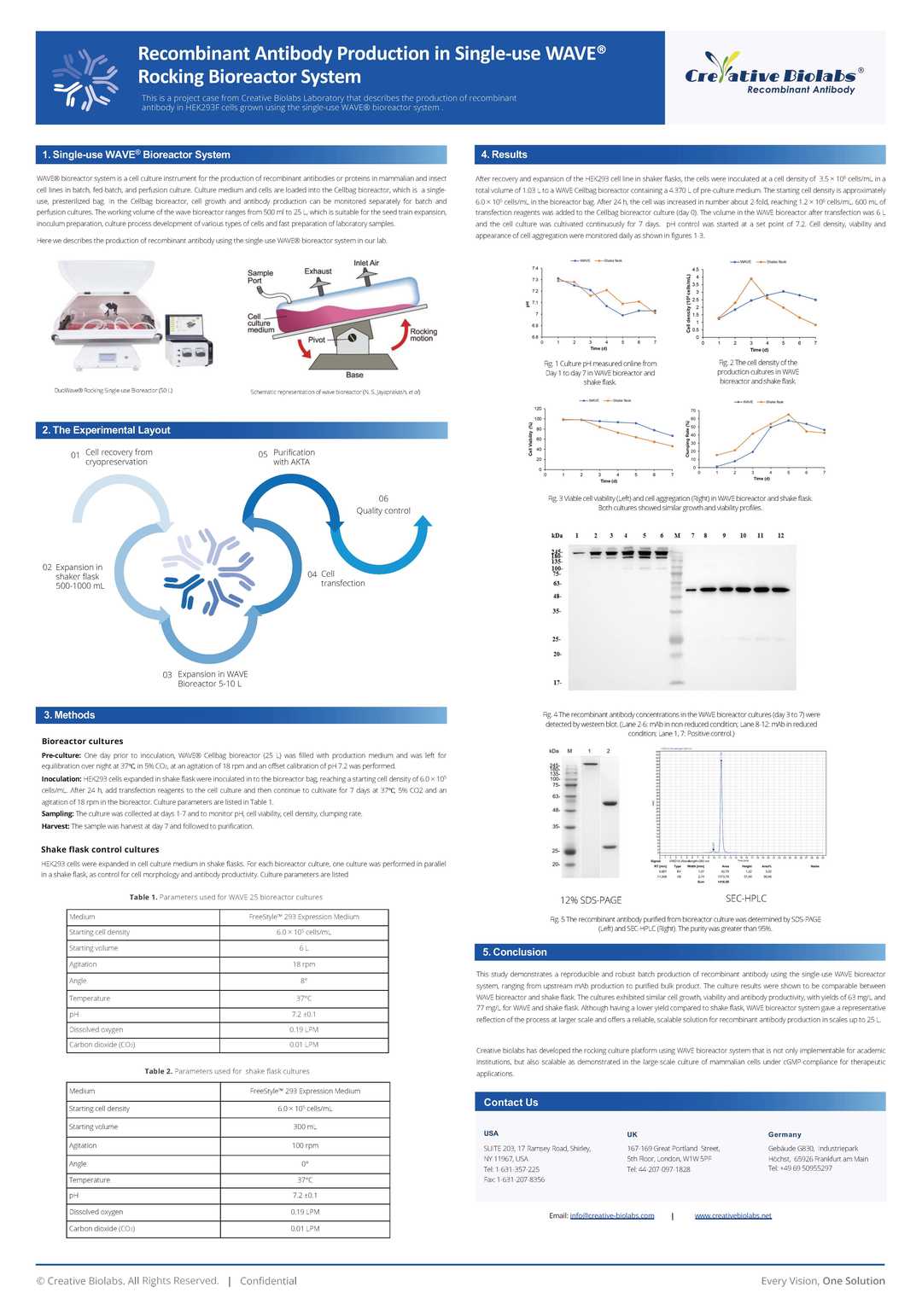Mouse Anti-APEX1 Recombinant Antibody (VS3-CJ839)
CAT#: VS3-CJ839
This product is a mouse antibody that recognizes human APEX1.









Specifications
- Immunogen
- Recombinant protein of human APEX1
- Host Species
- Mouse
- Type
- Mouse IgG1, κ
- Specificity
- Human APEX1
- Species Reactivity
- Human
- Applications
- WB, IF, IHC-P
- Conjugate
- Unconjugated
Product Property
- Purification
- Protein A/G affinity purified
- Purity
- >95% as determined by SDS-PAGE
- Format
- Liquid
- Buffer
- PBS, pH 7.3.
- Preservative
- 0.09% Sodium Azide
- Storage
- Store at 4°C for short term. Aliquot and store at -20°C for long term. Avoid repeated freeze/thaw cycles.
Applications
- Application Notes
- This antibody has been tested for use in Western Blot (1:2000), Immunofluorescence (1:25), Immunohistochemistry-Parraffin (1:25).
Target
- Alternative Names
- APE; APX; APE1; APEN; APEX; HAP1; REF1
- Gene ID
- 328
- UniProt ID
- P27695
- Sequence Similarities
- Belongs to the DNA repair enzymes AP/ExoA family.
- Cellular Localization
- Cytoplasm, Endoplasmic reticulum, Mitochondrion, Nucleus
- Post Translation Modifications
- Phosphorylated. Phosphorylation by kinase PKC or casein kinase CK2 results in enhanced redox activity that stimulates binding of the FOS/JUN AP-1 complex to its cognate binding site. AP-endodeoxyribonuclease activity is not affected by CK2-mediated phosphorylation. Phosphorylation of Thr-233 by CDK5 reduces AP-endodeoxyribonuclease activity resulting in accumulation of DNA damage and contributing to neuronal death.
Acetylated on Lys-6 and Lys-7. Acetylation is increased by the transcriptional coactivator EP300 acetyltransferase, genotoxic agents like H2O2 and methyl methanesulfonate (MMS). Acetylation increases its binding affinity to the negative calcium response element (nCaRE) DNA promoter. The acetylated form induces a stronger binding of YBX1 to the Y-box sequence in the MDR1 promoter than the unacetylated form. Deacetylated on lysines. Lys-6 and Lys-7 are deacetylated by SIRT1.
Cleaved at Lys-31 by granzyme A to create the mitochondrial form; leading in reduction of binding to DNA, AP endodeoxynuclease activity, redox activation of transcription factors and to enhanced cell death. Cleaved by granzyme K; leading to intracellular ROS accumulation and enhanced cell death after oxidative stress.
Cys-65 and Cys-93 are nitrosylated in response to nitric oxide (NO) and lead to the exposure of the nuclear export signal (NES).
Ubiquitinated by MDM2; leading to translocation to the cytoplasm and proteasomal degradation.
- Protein Refseq
- NP_001231178.1; NP_001632.2; NP_542379.1
- Function
- Multifunctional protein that plays a central role in the cellular response to oxidative stress. The two major activities of APEX1 in DNA repair and redox regulation of transcriptional factors. Functions as a apurinic/apyrimidinic (AP) endodeoxyribonuclease in the DNA base excision repair (BER) pathway of DNA lesions induced by oxidative and alkylating agents. Initiates repair of AP sites in DNA by catalyzing hydrolytic incision of the phosphodiester backbone immediately adjacent to the damage, generating a single-strand break with 5'-deoxyribose phosphate and 3'-hydroxyl ends. Does also incise at AP sites in the DNA strand of DNA/RNA hybrids, single-stranded DNA regions of R-loop structures, and single-stranded RNA molecules. Has a 3'-5' exoribonuclease activity on mismatched deoxyribonucleotides at the 3' termini of nicked or gapped DNA molecules during short-patch BER. Possesses a DNA 3' phosphodiesterase activity capable of removing lesions (such as phosphoglycolate) blocking the 3' side of DNA strand breaks. May also play a role in the epigenetic regulation of gene expression by participating in DNA demethylation. Acts as a loading factor for POLB onto non-incised AP sites in DNA and stimulates the 5'-terminal deoxyribose 5'- phosphate (dRp) excision activity of POLB. Plays a role in the protection from granzymes-mediated cellular repair leading to cell death. Also involved in the DNA cleavage step of class switch recombination (CSR). On the other hand, APEX1 also exerts reversible nuclear redox activity to regulate DNA binding affinity and transcriptional activity of transcriptional factors by controlling the redox status of their DNA-binding domain, such as the FOS/JUN AP-1 complex after exposure to IR. Involved in calcium-dependent down-regulation of parathyroid hormone (PTH) expression by binding to negative calcium response elements (nCaREs). Together with HNRNPL or the dimer XRCC5/XRCC6, associates with nCaRE, acting as an activator of transcriptional repression. Stimulates the YBX1-mediated MDR1 promoter activity, when acetylated at Lys-6 and Lys-7, leading to drug resistance. Acts also as an endoribonuclease involved in the control of single-stranded RNA metabolism. Plays a role in regulating MYC mRNA turnover by preferentially cleaving in between UA and CA dinucleotides of the MYC coding region determinant (CRD). In association with NMD1, plays a role in the rRNA quality control process during cell cycle progression. Associates, together with YBX1, on the MDR1 promoter. Together with NPM1, associates with rRNA. Binds DNA and RNA.
Customer Review
There are currently no Customer reviews or questions for VS3-CJ839. Click the button above to contact us or submit your feedback about this product.
Submit Your Publication
Published with our product? Submit your paper and receive a 10% discount on your next order! Share your research to earn exclusive rewards.
Downloadable Resources
Download resources about recombinant antibody development and antibody engineering to boost your research.
Product Notes
This is a product of Creative Biolabs' Hi-Affi™ recombinant antibody portfolio, which has several benefits including:
• Increased sensitivity
• Confirmed specificity
• High repeatability
• Excellent batch-to-batch consistency
• Sustainable supply
• Animal-free production
See more details about Hi-Affi™ recombinant antibody benefits.
Datasheet
MSDS
COA
Certificate of Analysis LookupTo download a Certificate of Analysis, please enter a lot number in the search box below. Note: Certificate of Analysis not available for kit components.
Protocol & Troubleshooting
We have outlined the assay protocols, covering reagents, solutions, procedures, and troubleshooting tips for common issues in order to better assist clients in conducting experiments with our products. View the full list of Protocol & Troubleshooting.
Secondary Antibody
- CAT
- Product Name
Recommended Dilution Buffer
- CAT
- Product Name
See other products for "APEX1"
Select a product category from the dropdown menu below to view related products.
| CAT | Product Name | Application | Type |
|---|---|---|---|
| MOB-1969z | Mouse Anti-APEX1 Recombinant Antibody (clone 7F4) | WB, FC, ICC, IF, IHC | Mouse IgG2a |
| MOB-0652MZ | Mouse Anti-APEX1 Recombinant Antibody (clone 3205) | ELISA, WB | Mouse IgG |
| MRO-1652-CN | Rabbit Anti-APEX1 Polyclonal Antibody (MRO-1652-CN) | WB, IF, IHC, FC | Rabbit IgG |
| VS3-QX57 | Mouse Anti-APEX1 Recombinant Antibody (clone 12H1) | WB, ICC, IHC, FC | Mouse IgG2a |
| VS3-QX58 | Mouse Anti-APEX1 Recombinant Antibody (clone 12H2) | WB, ICC, IHC, FC | Mouse IgG2b |
| CAT | Product Name | Application | Type |
|---|---|---|---|
| MOR-0201 | Hi-Affi™ Rabbit Anti-APEX1 Recombinant Antibody (clone DS201AB) | WB | Rabbit IgG |
| CAT | Product Name | Application | Type |
|---|---|---|---|
| VS-0724-YC1178 | AbPlus™ Anti-Apex1 Magnetic Beads (VS-0724-YC1178) | IP, Protein Purification | |
| VS-0724-YC1179 | AbPlus™ Anti-APEX1 Magnetic Beads (VS-0724-YC1179) | IP, Protein Purification |
| CAT | Product Name | Application | Type |
|---|---|---|---|
| VS-1024-XY30 | Mouse Anti-NHP APEX1 Recombinant Antibody (clone 13B 8E5C2) | WB, IHC, FC, IP | Mouse IgG2a |
Popular Products

Application: Neut, ELISA, IF, IP, FuncS, FC, ICC

Application: WB, FuncS, IF, Neut, ELISA, FC, IP

Application: FuncS, IF, Neut, ELISA, FC, IP, IHC

Application: IP, IF, FuncS, FC, Neut, ELISA, ICC

Application: FuncS, IF, Neut, ELISA, FC, IP, IHC

Application: IHC, ELISA, FC, WB, ADCC, FuncS

Application: Neut, Inhib, FC, ELISA

Application: Block, IP, IF, FC
-3.jpg)
Application: Neut

Application: ELISA, WB, FC, IHC, IP

Application: ELISA, FC
For research use only. Not intended for any clinical use. No products from Creative Biolabs may be resold, modified for resale or used to manufacture commercial products without prior written approval from Creative Biolabs.
This site is protected by reCAPTCHA and the Google Privacy Policy and Terms of Service apply.

























